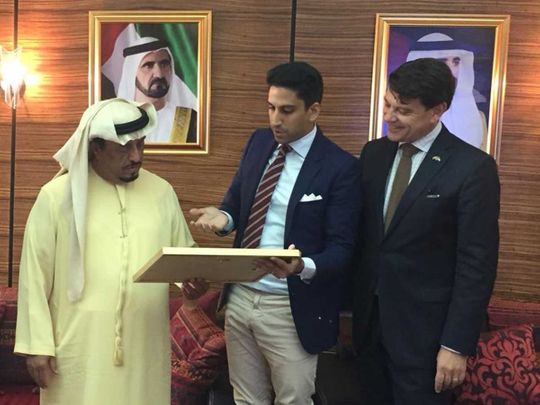
A leading global provider of solutions in traffic management, Sensys Gatso offers cutting-edge systems for police forces here in the UAE.
Please elaborate on Sensys Gatso’s Vision Zero Initiative.
Vision Zero is a collaborative movement born in Sweden in 1997 to bring traffic related fatalities down to the only acceptable number, zero. This movement has, according to the Swedish Transport Administration, “turned the traditional view of road safety work upside down”. Vision Zero “puts people first” and focuses specifically on preventing accidents that can lead to fatalities or lifelong injuries. Partnerships between governments and private companies can be an effective way to identify and address the most critical traffic issues in order to reach the goal of zero deaths.
Vision Zero is a holistic approach to traffic management which leans on four pillars: Engineering, education, enforcement and emergency services. Sensys Gatso’s success in enforcement has allowed for focused progress in engineering and education.
Sensys Gatso remains the original and exclusive provider of speed enforcement cameras for the Swedish Transport Administration, the birthplace of Vision Zero in 1997. Over 3,000 cameras have been delivered and maintained by Sensys Gatso in Sweden over the years. Sensys Gatso takes pride in knowing its cameras have helped make Swedish roads some of the safest in the world.
Tell us about your range of products and the technology that lies behind them.
As I mentioned, our contribution to Vision Zero is the enforcement part. Since 1958, Sensys Gatso has delivered products for traffic enforcement with core competencies in radar and advanced camera technologies.
Our solutions include hardware and software for speed and red-light enforcement but in this region we also see demand for additional automated violation types such as illegal turns at an intersection, tailgating on the highway as well as distracted driving, the latter being a very challenging phenomena that is nowadays possible to detect through machine learning. This basically means teaching the camera to recognise and classify small details in the passing vehicles, such as a hand or a phone or in a violating scenario, a hand holding a phone.
We also see demand for more covert enforcement which increases the perception or feeling of drivers that they can be caught for a traffic violation. This subjective feeling can be increased by enforcement that is unpredictable in nature, time and location. This kind of enforcement has proven to be very efficient in improving driver behaviour. A recent example is our delivery of more than thousand radar systems to be installed in unmarked police vehicles in places like France, Saudi Arabia and a market in North Africa, detecting speed of arriving and passing vehicles while in motion.
Another example is how to use ANPR (Automatic Number Plate Recognition) data from passing vehicles. For example in the Kingdom of Bahrain we use this data to compare license plates to a database of blacklisted/wanted vehicles, while in the state of Oklahoma in the US, we use it to detect drivers without car insurance.
Finally, and perhaps most importantly, we have recently launched TRaaS, or Traffic Enforcement as a Service, where we package the entire enforcement portfolio as a service, starting with data generation sensors (enforcement cameras), followed by our PULS Analytics Software, and finally the Xilium back office violation processing software. In the US for example, we provide A-Z service across various cities, from installing the enforcement camera on the road to even sending out and retrieving the fine from the violated driver.
You have had long and successful partnerships with police services across all Emirates. In which areas have you collaborated with Dubai Police and other forces?
We have partnered with Dubai Police since the early 2000s and today have more than 500 enforcement systems (moved between speed and red-light) in Dubai. We also have close relationships with Ras al Khaimah, Ajman and Fujairah Police forces to whom we have delivered over 200 systems over the years. In fact last month we received new orders from Dubai Police, Ajman Police and Ras al Khaimah Police. It is important to note that while in our home country of Sweden we work directly with the Swedish Transport Administration, in most other markets including the UAE, we work through various local partners. However, one of the keys to success is local presence, which enables us to support our partners on the ground while further developing close relationships with key individuals across the various police forces.
Can you share any feedback on the positive impact of your collaboration in the UAE?
Police forces in the UAE are some of the most progressive and knowledgeable customers in the world. While we have supported them in reaching their traffic safety targets, they have made us a better and more competitive supplier. As you know, the roads in the UAE are rather wide and relatively dense, not to mention the number of nationalities and driving behaviours we have here, so to be able to change driver behaviour over the years, we have had to develop technologies suitable for the UAE, and what’s interesting is that since the UAE is such a positive benchmark for other markets, not only because of the challenging roads, but also for its innovative and open approach to new technologies, we know that once we succeed here and keep up development and innovation, we are good to go elsewhere.









